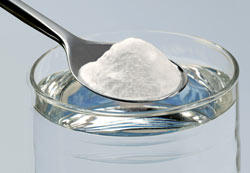Almost all natural waters contain chloride and sulfate ions. Their concentrations vary considerably according to the mineral content of the earth in any given area. In small amounts, they are not significant. In large concentrations they present problems. Usually chloride concentrations in water are low. Sulfates, on the other hand, can be more troublesome because they generally occur in greater concentrations. Interestingly, low to moderate concentrations of both chloride and sulfate ions add palatability to water. In fact, they are desirable for this reason. But excessive concentrations of either, of course, can make water unpleasant to drink.

Let us start with Chloride. Chloride is commonly found in streams and wastewater. Chloride may get into surface water from several sources including:
- Wastewater from industries and municipalities
- Wastewater from water softening
- Road salting
- Agricultural runoff
- Produced water from gas and oil wells
The EPA Secondary Drinking Water Regulations recommend a maximum concentration of 250 mg/1 for chloride (expressed as Cl-not as CaC03).
Sulfate is a constituent of TDS and may form salts with sodium, potassium, magnesium, and other cations. Sulfate is commonly found in nature and can be present at concentrations of a few to several hundred milligrams per liter. Water containing calcium sulfate ions is likely to have a characteristic taste ... somewhat bitter and astringent. In fact, it has been compared to the way dissolved gypsum might taste in water. When 30 to 40 grains per gallon of calcium sulfate are dissolved in water, most people can detect the taste. The EPA Secondary Drinking Water Regulations recommend a maximum concentration of 250 mg/1 for sulfate ions (expressed as S04--, not as CaC03).
If equal amounts of magnesium sulfate or sodium sulfate are dissolved in water, the taste would not be noticeable. Both possess definite laxative effects in concentrations above 30 grains per gallon. In this way, they can be troublesome especially to people not accustomed to such water. In addition to their laxative properties and possible medicinal taste, sulfate water can mean extreme hardness, large amounts of sodium salts, or acidity. Alone or together, these can pose special problems in the conditioning of water.
Chlorides give water a salty taste. In large concentrations, chlorides cause a brackish, briny taste that definitely is undesirable. Although chlorides are extremely soluble, they possess marked stability. This enables them to resist change and to remain fairly constant in any given water unless the supply is altered by dilution or by industrial or human wastes. Both chlorides and sulfates contribute to the total mineral content of water. As indicated above, the total concentration of minerals may have a variety of effects in the home. High concentrations of either sulfate or chloride ions add to the electrical conductivity of water.
Chlorides and sulfates can be substantially removed from water by reverse osmosis. Deionization (demineralization) or distillation will also remove chlorides and sulfates from water, but these methods are less suitable for household use than reverse osmosis. Drinking pure water allows our body to naturally heal and cleanse our body properly. Water is the only way for our body to flush toxins from our system, which is a key to preventing disease. If the water already contains chlorine and other chemicals it has less of an ability to carry out the toxins in our body. If the water we drink is contaminated, our kidneys and liver are left to be the filter. Don’t forget the amount of water we drink is just as important as the quality of the water, so drink up and stay hydrated!



